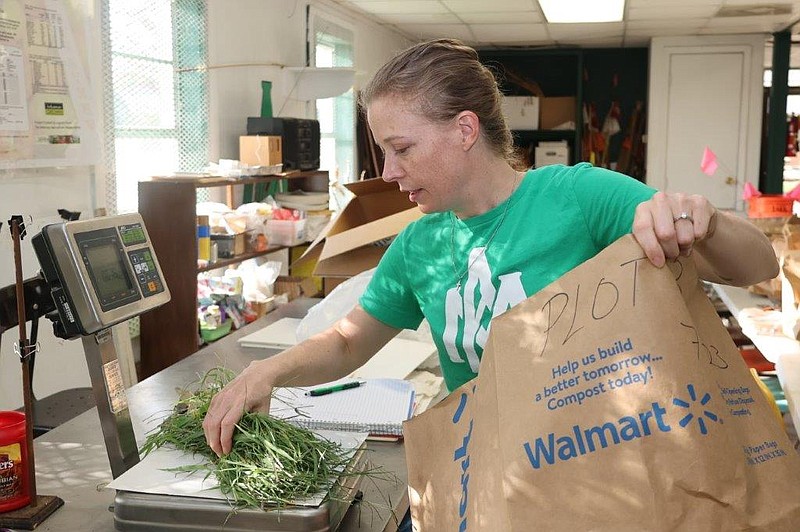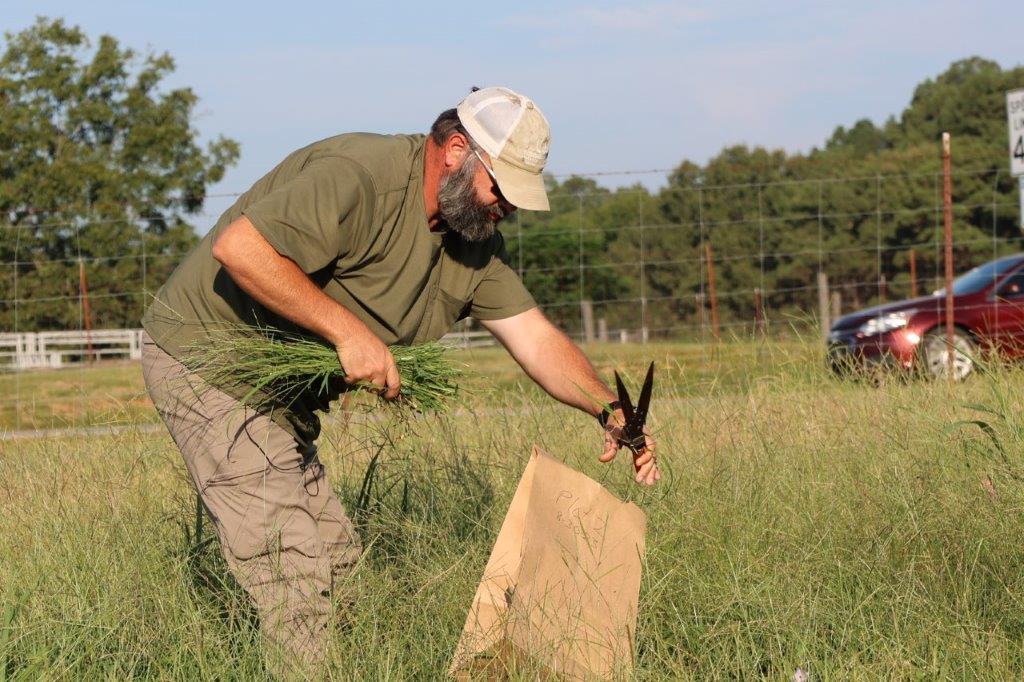In rural Arkansas, researchers with the University of Arkansas System Division of Agriculture are exploring the potential of biochar to replace synthetic fertilizers in hay production -- especially when combined with poultry litter.
Biochar is produced when timber waste is exposed to high heat and no oxygen.
The implications of the research could be significant. A positive outcome could provide the forest industry with a new eco-friendly byproduct for wood mill residues and provide farmers in southeast Arkansas with a cheaper alternative to synthetic fertilizers. While chicken litter is a valuable source of fertilizer that has been used for decades, it has become harder to acquire and both transportation and application have become more expensive.
Furthermore, biochar has been found to sequester carbon in soil, an important factor in reducing greenhouse gases in the atmosphere.
Kathleen Bridges, assistant professor of agronomy for the University of Arkansas at Monticello's College of Forestry, Agriculture and Natural Resources, and Scott Hayes, Drew County extension agent for the Division of Agriculture, are leading the project. They each said the potential research outcomes are unknown at this point.
"We don't know if it will be good or bad," said Bridges, who is jointly employed by both UAM and the Cooperative Extension Service, specializing in soils and crop sciences. "It could be a negative thing, but hopefully science will reveal that."
Hayes said the research is somewhat new.
"Most of our producers in this area use chicken litter as a fertilizer for their hay pastures. By mixing this with the biochar, we hope to see better soil health through microbial activity," Hayes said.
Hayes and Bridges launched their project in June with 20 plots, each measuring 9 square meters, in a hayfield near the UAM Agriculture Building in Monticello. A local company donated the biochar, while an acquaintance of Hayes supplied the chicken waste.
Hayes and Bridges mixed the two sources and then hand-spread the chicken litter mix and let nature take its course. The plot produced its second cutting of hay in September -- somewhat ahead of schedule, due to the high summer heat.
"We are trying to measure the biomass of our forage production," Bridges said.
The research team is using a tool known as a quadrat, which subdivides each plot -- the quadrat in this experiment dividing the plots into squares measuring 25 by 25 centimeters -- and shears for taking forage samples. The treatments include different rates of biochar and chicken litter. By weighing the samples collected, Bridges will be able to calculate the amount of forage production on a per-acre basis.
"We are recording forage weights and tonnage per acre," Hayes said. "She's also collecting soil samples and keeping up with those because this will be a long-term project. Soil doesn't just change overnight; it will take years and be a good project."
CARBON STORAGE POTENTIAL
Biochar is high in carbon. When it's applied to the soil, it can be sequestered there for many years, potentially increasing the number of microorganisms in the soil. Those microorganisms play a very important role in plant growth.
Bridges said there is a lot of biochar research across the state, including projects that involve mixing biochar with fertilizers for row crops such as corn and rice.
"They are also looking at using biochar in the chicken houses with the chicken litter, or with the bedding in the chicken houses, to see if it will help with reducing ammonia production," she said.
Exposure to ammonia can injure chickens, Bridges said.
Hayes said the biochar product they used was light, and his part in this project is to try to make it easy for producers to incorporate biochar into their fertilizer program without needing any specialty equipment. Biochar mixed with chicken litter, which farm producers already use, will be heavier and can be put into a spreader, where it will be mixed and applied on pastures or cropland evenly.
FUTURE FUNDING
Much of the Division of Agriculture's research, including that conducted by the University of Monticello, is grant-funded. The biochar project, however, has proceeded thus far without any such funding. Bridges and Hayes said that if successful, their work could lead to larger, grant-funded research that further helps farmers and the forest products industry.
"At the beginning of the summer, Scott came to me and said, 'We've got access to the biochar; we got access to chicken litter, and we got access to a pasture. So, let's go ahead and do this,'" Bridges said. "And I said, 'OK.'"
Bridges said the team is currently processing samples and collecting data.
"We're just seeing what we can do to keep the agriculture alive here in southeast Arkansas and make it good for our livestock and forestry guys," Hayes said.
To learn about extension programs in Arkansas, contact a local Cooperative Extension Service agent or visit www.uaex.uada.edu. Follow the agency on X and Instagram at @AR_Extension.
Lon Tegels is with the College of Forestry, Agriculture and Natural Resources, University of Arkansas at Monticello.

